#Multichannel Ad Tracking
Explore tagged Tumblr posts
Text
Auto Technologies Inc.
Marketing Agency

Marketing Agency
Address- 7500 College Blvd., Overland Park, KS, USA 66210
Phone- +1 866-673-5476
Email- [email protected]
Website- https://aticalltracking.com
Unlock the power of data-driven decision-making with our comprehensive Call and Advertising Tracking Services. Elevate your marketing strategies by gaining unparalleled insights into customer interactions and campaign performance.
Key Features:
1. In-Depth Analytics: Track and analyze every customer call to understand the effectiveness of your advertising efforts. Gain valuable insights into caller demographics, preferences, and behavior.
2. ROI Measurement: Quantify the return on investment for your advertising campaigns with precision. Our services provide detailed metrics on the success of your marketing initiatives, enabling you to allocate resources effectively.
3. Dynamic Number Insertion: Implement dynamic number insertion to seamlessly track calls originating from various advertising channels. Know exactly which ads are driving customer engagement and conversions.
4. Keyword-Level Tracking: Pinpoint the keywords that generate phone calls. Optimize your advertising strategy by focusing on high-performing keywords and eliminating those that don't contribute to call volume.
5. Real-Time Monitoring: Stay informed in real-time with live monitoring of incoming calls. React promptly to campaign performance and make adjustments on the fly for maximum impact.
6. Multichannel Visibility: Whether it's online or offline advertising, our services provide a unified platform for tracking calls across multiple channels. Understand the holistic impact of your marketing efforts.
7. Call Recording: Enhance customer service and training by recording and analyzing customer calls. Gain insights into customer feedback, identify pain points, and refine your advertising approach accordingly.
8. Location-Based Tracking: Understand the geographical reach of your advertising campaigns. Identify regions where your ads are most effective and tailor your strategy to target specific locations.
Empower your business with a comprehensive solution that bridges the gap between advertising and customer engagement. Our Call and Advertising Tracking Services revolutionize the way you measure, analyze, and optimize your marketing efforts, ensuring every call contributes to the growth and success of your business.
Business Hours- Mon - Fri: 9AM - 5PM
Payment Methods- All forms of payment accepted CC, Amex, Discover, Paypal, Venmo, Check, Wire
Year Est- 2002
Owner Name- Roberta Long
Follow On:
Facebook- https://www.facebook.com/autotechnologies
Twitter- https://twitter.com/autotechnologie
LinkedIn- https://www.linkedin.com/in/autotechnologies/
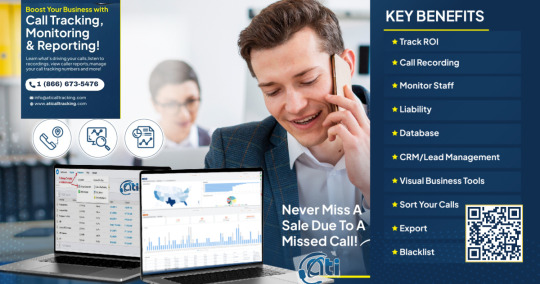
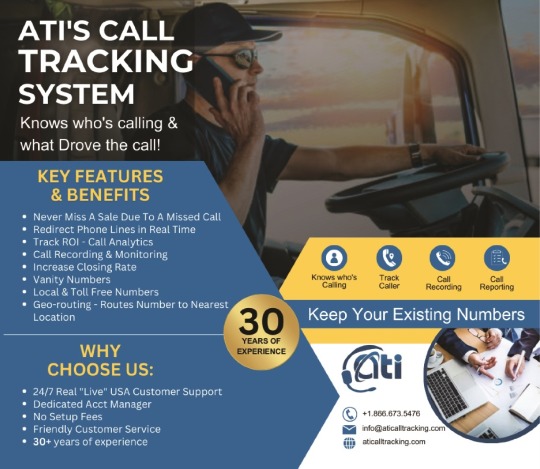
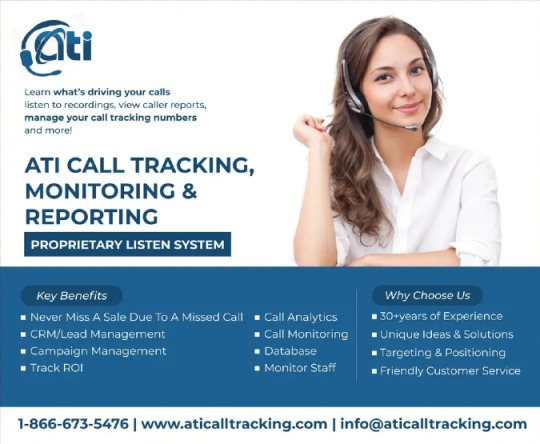


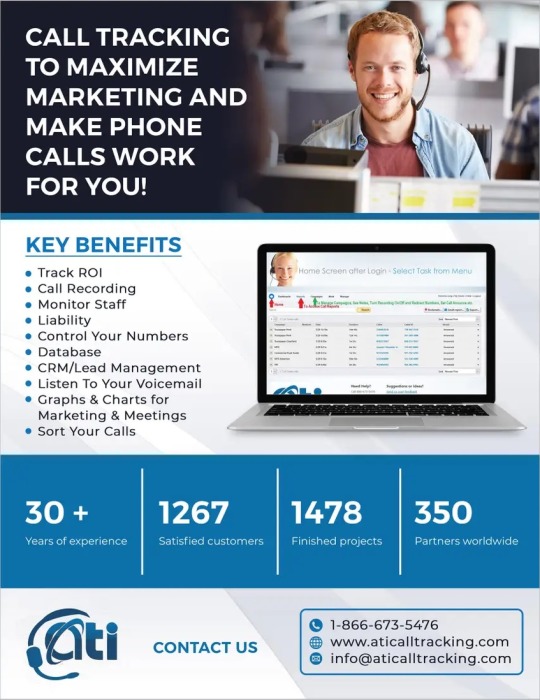
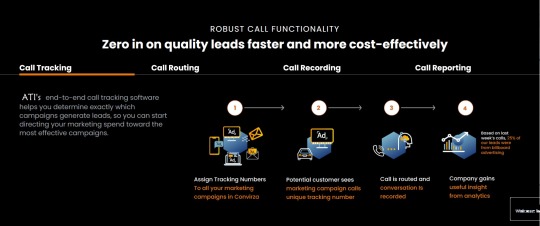
#Advertising Call Tracking#Call Monitoring for Ads#Campaign Call Analytics#Customer Call Tracking#Ad Performance Metrics#Call Attribution for Advertising#Inbound Call Monitoring#Outbound Call Analytics#Call Tracking Software for Marketing#ROI Tracking for Calls#Keyword-Level Call Monitoring#Ad Campaign Call Metrics#Call Conversion Tracking#Ad Response Tracking#Click-to-Call Analytics#Multichannel Ad Tracking#Lead Source Call Monitoring#Real-time Ad Call Tracking#Ad Impressions Call Metrics#Ad Spend ROI Analysis#Dynamic Number Insertion for Ads#Location-based Ad Call Tracking#Call Recording for Advertising#Customer Interaction Analytics#Offline Conversion Tracking for Ads
1 note
·
View note
Text
Buy Walmart Seller Account For Any Country
Buy Walmart Seller Account
Buy Walmart Seller Account – 100% Safe & Best Marketplace
Buy a Walmart Seller Account to start your E-Commerce business. Connect to CRM, Summary, People, Signals & News. About. Buy Walmart Seller Account.
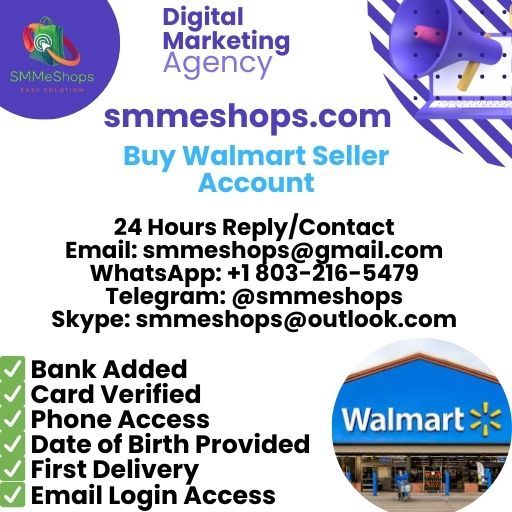
Our service gives:-
✅ 24/7 Customer Support
✅ 100% Satisfaction & Recovery Guaranteed
✅ Email Login Access
✅ Bank Added
✅ Card Verified
✅SNN code and Router number.
✅ Phone Access
✅ Driving License Scan Copy
✅ Date of Birth Provided
✅ First Delivery
✅ Realistic Photo Attached Accounts
✅ Complete Account Access
✅ Account from unique IPs
✅Personal and Business accounts.
✅100% phone verified USA, UK, and other countries.
✅100% Full document verified.
To Talk More About Getting & Buy Any Service Contract With Us:
24 Hours Reply/Contact
Email: [email protected]
WhatsApp: +1 803-216-5479
Telegram: @smmeshops
Skype: [email protected]
The History Of Walmart Marketplace
Considering the eventuality of online businesses, Walmart launchedwalmart.com in the year 2000. The website was designed to offer a
flawless and harmonious client experience – be it store or online.
In 2007, it launched its Store Service, where it innovated the concept of multichannel shopping by allowing guests to pick their online orders in stores.
During 2009, Walmart stepped into the online world and created the so- called Walmart Marketplace. The idea was to invite different third- party merchandisers
and help them find their products atWalmart.com.
Ultimately, this conception opened a whole new avenue and brought in colorful retailers countrywide, growing their openings to a more significant position.
At the moment, it boasts more than 300- 400 retailers, including some big titans like eBags, ProTeam, and Wayfair. The products of third- party merchandisers are vended
together with the name “ Walmart Marketplace ” on the Walmart force( online). This is substantially to distinguish them from the usual particulars.
The particulars that are vended from a third party aren't traded or vended in stores.
In August 2016, WalmartInc. acquired thee-commerce businessJet.comInc. for 3 billion USD. This makes it a big deal for merchandisers because their
products can be stressed onWalmart.com elevations. Also, its massive consumer followership is another advantage.

Should Walmart Be A Part Of Your Multi-Channel Strategy?
Since Walmart is decreasingly inclining its growth every time, it's great news for all business merchandisers out there. After all, the idea is to invite implicit
shoppers and offer competitive advantages to merchandisers.
Doug McMillon, Walmart CEO, has stated that their 2- day free shipping concept has formerly given “ an amazing supplement ” in terms of deals. So, this makes
It is a great time to talk about multichannel selling. Still, this might not be as easy as it sounds.
The further channels and SKUs you manage, the more advanced are the possibilities to lose track of your force and orders. still, you could go with intelligent robotization
tools to help you with that.
What is Walmart Marketplace?
Walmart Marketplace is an online platform, like Amazon and eBay, where small businesses can list their products for trade online, alongside Walmart’s own products.
Walmart has long distinguished itself for its low prices, so this business is a good fit for merchandisers that offer great products at affordable rates.
You can use Walmart’s Sponsored Hunt advertisements to promote your products to Walmart’s callers and use their fulfillment services, if asked ,
to handle the logistics of managing force and shipping out orders.
How much is your Walmart Marketplace seller account worth?
We reached out to the investor that purchases these accounts and asked them about the process. The accounts are valued grounded on age,
deals history and number of dealer reviews. Newer accounts that have little to no deals history or dealer reviews are generally worth a many hundred bones and
aged accounts with good deals history and a considerable quantum of dealer reviews can be worth many thousand bones .
Is it safe to sell my Walmart Marketplace seller account?
According to the investor, it's 100% safe and secure to sell your account. After they confirm that your dealer account is licit and in good standing,
payment is transferred to the dealer. also they give you with new company and fiscal information for you to remove yours and replace with the new word so that
none of your sensitive information remains. Once you have completed the process, you give access to the account, icing that your sensitive information is norway
seen or remains after the transfer.
How do you get an offer to find out how much your account is worth?
We ’ve included a link below to an online form where you'll enter some information about your account. It generally takes about 5 twinkles to complete and
after you submit your word, you're transferred an offer for your account within 1 business day.However, the payment and transfer process generally takes about
1- 3 business days to complete, If you choose to accept the offer.
How to Set up a Seller Account on Walmart Marketplace
Walmart is one of the largest retailers in the world. Walmart is gaining its position as a US eCommerce point via retail, websites, and mobile apps.
As Walmart continues to make out its business capabilities, the number of approved merchandisers has been climbing at an adding pace. This business has been
historically conservative about who they allow dealing on their platform. Their delicate operation process and strict conditions have been a roadblock for
numerous-commerce merchandisers. In this moment's blog, we will show you how to set up a dealer account on Walmart.
New seller incentives

Because Walmart Marketplace is presently in a growth phase, it’s a boon for merchandisers at the moment. Walmart has offered a range of promos for brands
willing to subscribe up. While these can shift over time, one of the most recent promos Walmart offered was a 25 reduction in commission rates for the first
90 days of selling.
Economies of scale
For merchandisers who are formerly using business tools like warehousing and fulfillment coffers, integrating into the Walmart ecosystem can be fast and easy.
While costs might rise due to increased use, you ’re effectively spreading your investment across further than one occasion. This drives raised profit without a
commensurable increase in spending.
Omni-channel opportunities
By adding Walmart Marketplace to the blend of being platforms you use, you ’ll have the occasion to take an omni- channel approach by spreading your products and
services across Walmart’s online and physical stores. With different requests and deals strategies, the Walmart Marketplace gives you another followership to engage with.
Expert tips for selling on Walmart Marketplace
numerous brands have their reasons for using this platform and can establish themselves on Walmart’s business, but not all guests will be made equal.
Some merchandisers will perform better than others, so, if you want to be the stylish of the stylish and come a name shoppers come to know and trust, keep these expert
tips in mind.
Win the Buy Box
Buy Box products are the first and largest result on hunt runners; all other products are listed below. The Walmart algorithm uses a many crucial criteria
to weigh who'll win the most affordable pricing, including shipping costs, force situations, and accurate information about product quality.
Still, your products are in stock, and your rosters are accurate, If your pricing is competitive.
Have competitive pricing
As compelling as it might be to keep your prices high for maximum profit, this is n’t a stylish marketing strategy. rather, you need to keep pricing in line
with client prospects. This frequently means changing the right balance between remaining competitive while still doing as much as possible to turn a profit.
Managing this successfully may bear price testing, in which pricing is acclimated and estimated against deals. This, alongside force vacuity and contender geste ,
can help you come to a price that will win the Buy Box.

Understand your audience
Some brands assume the buyers on Walmart will be the same as those on platforms like Amazon and Target, but this is n’t inescapably the case.
The demographics can be different, particularly concerning youngish shoppers who might protect in person at Walmart, buy online at Amazon.
By understanding who's shopping on Walmart’s website for products like yours, you can tweak product descriptions, optimize keyword use,
and place flings strategically to capture the most effective guests for your brand.
Use automation
Doing everything yourself, from curating product information to client exploration to assaying the competition, is theoretically possible,
but can eat up a significant quantum of time with minimum substantiation that you ’re getting anywhere. Through the use of Walmart advertising software,
you can let robotization take over the hard corridor. Streamline workflows, access thorough yet stoner-friendly analytics,
and produce juggernauts that target all areas of the deals channel.
robotization can also help with placing flings on keywords for PPC announcement juggernauts. Platforms like ours influence your objects,
to run tests by changing flings, and establishing optimal settings. robotization on larger product registers can be a good way to get ahead without a
significant time investment.
Keyword harvesting
It’s hard to succeed in PPC advertising if you ’re not using the right keyword approach. Rather than trying to keep up with clicks, transformations,
and prints for everything you have listed for trade, automating this process can help you gather the stylish possible keywords for your products.
With the right AI- guided tools, you can manage your juggernauts while letting advertising software shoulder the burden of bidding and data analysis.
In summary
Dealing on Walmart Marketplace can feel dispiriting at first, after all, adding another eCommerce platform to the blend requires considerable time investment,
but getting started, particularly if you formerly have a presence on spots like Amazon, can be easier than you suppose.
And, if you ’re formerly using or are considering employing an eCommerce tool designed to automate and streamline pricing, keyword use, bidding, and followership analysis,
creating a robust and profitable storefront can be a great occasion to turn a profit. Contact Trellis moment to see what our moxie and AI results can do to
move your business forward.
How much does it cost to sell on Walmart Marketplace?
There are no outspoken costs involved with dealing via the Walmart business. Unlike platforms that charge class or subscription freights, getting started is free.
Rather, Walmart charges commissions on deals grounded on order, ranging from around 6 to 20. There also may be new stoner promos that can reduce the overall cost for
the first many months.
How long does it take to start selling on Walmart?
Assuming all account details are handled duly and there’s no need for fresh information, it can take between two to four weeks for Walmart’s
internal platoon to review and authorize your account. To minimize detainments, respond to any queries the Walmart platoon has as snappily as possible to insure
a prompt launch to selling.
Can individuals sell on Walmart Marketplace?
Yes, individualities can be sold on Walmart Marketplace. Still, a social security number is not permitted as a way to produce and corroborate an account. therefore,

If an individual dealer wants to begin listing products, they ’ll need to produce some kind of business that uses a drum. An LLC is a simple way for single merchandisers
to produce a company- such as structure.
Note that Walmart generally should not be the first platform druggies vend on, due to their sign up conditions of having attestation of former success in the eCommercespace.
However, Walmart is doubtful to accept your operation, If you do n’t have experience in other commerce. still, this is good news for merchandisers who get approved
as it creates a more secure space for buyers, weeds out echo brands cutting into your request share, and weeds out some of the noise druggies face on commerce. SMMeSHOPS.COM
#Buy Walmart Seller Account For Any Country#Buy Walmart Seller Account 2024#Buy Walmart Seller Account USA#Buy Walmart Seller Account UK#Buy Walmart Seller Account World#BuyWalmartSellerAccount#Buy Walmart Seller Account
2 notes
·
View notes
Text
Navigating the World of Digital Marketing: What You Need to Know
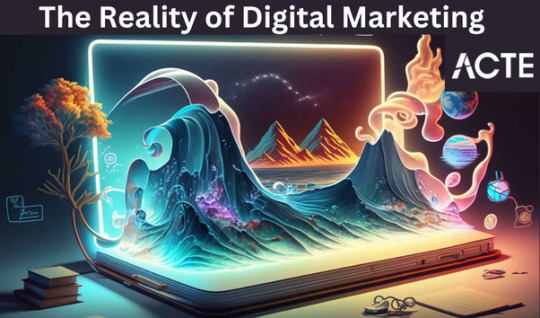
1. The Digital Marketing Landscape: Digital marketing isn’t just one thing; it’s a combination of various strategies and channels that businesses use to promote their products or services online. These strategies include:
SEO (Search Engine Optimization): This is about making sure your website shows up when someone searches for stuff on Google. It’s like being on the first page of a big book so people can find you quickly.
Content Marketing: You know when you read cool stuff on the internet, like blogs or watch videos? That’s content marketing. It’s like sharing interesting stories to get people interested in your business.
Social Media: When you see posts or ads on Facebook, Instagram, or other social sites, that’s businesses trying to talk to you. They want to be your online friend.
Emails: Sometimes, you get emails from companies about their products or offers. It’s like getting a letter from a friend, but it’s a business.
Paid Ads: You might see ads when you’re watching videos or reading articles online. These businesses pay to be seen by you.
Affiliate Marketing: Ever see someone recommend a product and share a link? If you buy through that link, they get a reward. It’s like saying, “Hey, this is cool, you should check it out.”
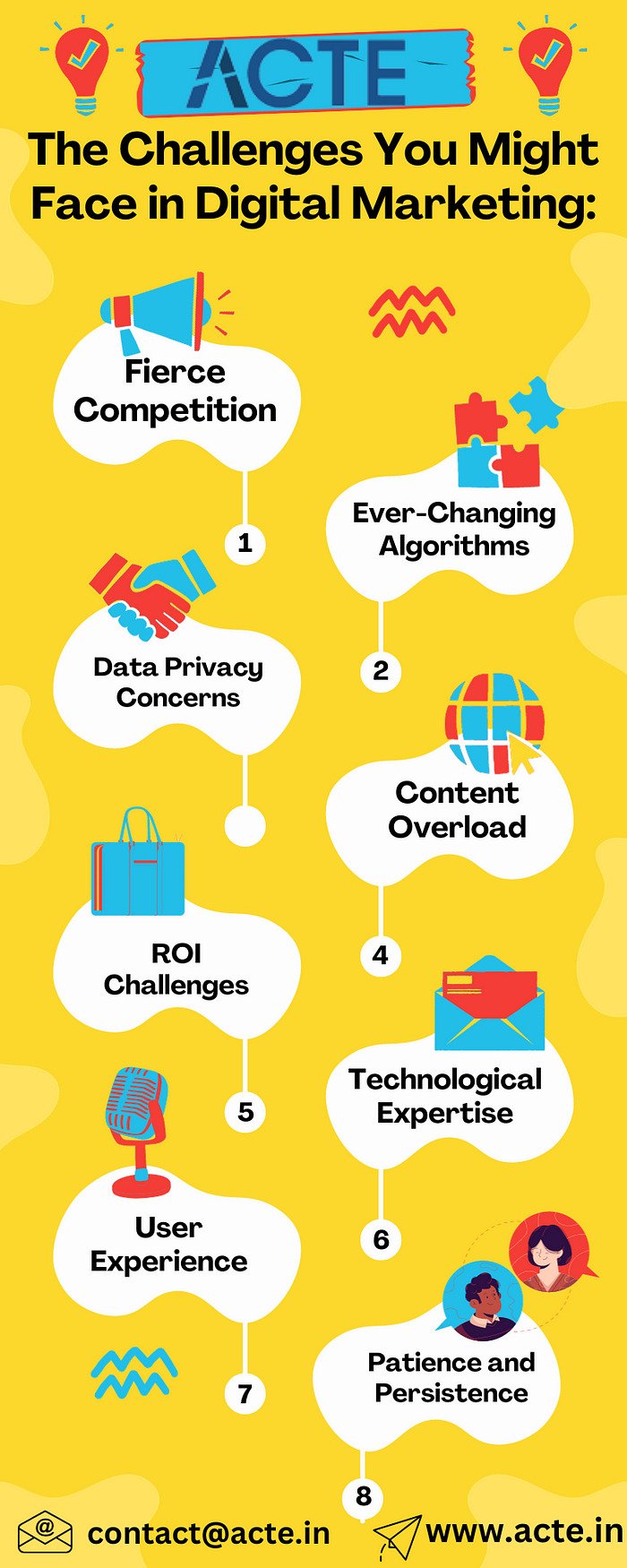
While digital marketing offers tremendous opportunities, it comes with its share of challenges:
Fierce Competition: Many businesses are vying for the same audience’s attention, making it crucial to stand out and be creative.
Ever-Changing Algorithms: Major online platforms frequently update their algorithms, impacting how your content gets seen. Staying adaptable is essential.
Data Privacy Concerns: People are increasingly concerned about their online privacy. It’s vital to comply with data protection regulations and build trust.
Content Overload: There’s an abundance of content online, so creating high-quality, valuable content is essential to cut through the noise.
ROI Measurement: Measuring the success of digital marketing efforts can be tricky and might take some time to see significant results.
Technological Expertise: Keeping up with emerging technologies, automation, artificial intelligence, and analytics is vital for staying competitive.
User Experience (UX): A poor website or mobile app design can drive visitors away, emphasizing the importance of a good user experience.
Multichannel Approach: Coordinating and maintaining consistent messaging across multiple platforms can be challenging.
Patience and Persistence: Success in digital marketing usually doesn’t happen overnight; it requires ongoing effort, learning, and adapting.
Authenticity Matters: Building trust with customers through genuine and transparent interactions is crucial.
3. The Good Side:
But, there’s lots of good stuff about digital marketing:
Global Reach: Even small businesses can talk to people all over the world. It’s like having pen pals from everywhere.
Targeted Ads: Imagine you’re selling soccer shoes. You can show ads to people who love soccer. It’s like telling the right people about your stuff.
Track Results: You can know if your ads are working. It’s like checking how well your garden is growing.
Affordable: It’s cheaper than putting big ads on TV or in newspapers. Even small businesses can play the game.
Creativity Rules: You can do fun stuff online. It’s like painting a cool picture, but on the internet.
Talk in Real Time: You can chat with businesses anytime. It’s like having a friend who answers your texts right away.
Grow with Your Business: Imagine you start selling cookies at school, and then your cookies become famous. You can sell them to more people. It’s like levelling up in a video game.
In summary, digital marketing is a dynamic and ever-evolving field filled with both opportunities and challenges. Understanding these realities is crucial for success in this digital age.
If you want to learn more about digital marketing, I highly recommend that you contact ACTE Technologies because they offer certifications and job placement opportunities. Experienced teachers can help you learn better. You can find these services both online and offline. Take things step by step and consider enrolling in a Digital Marketing Course if you’re interested.
If you feel that my Blog has been helpful, make sure to follow me and give it an upvote to encourage me to upload more content about digital marketing.
Thank you for spending your valuable time and upvotes here. Have a great day.
2 notes
·
View notes
Text
Why to Use Direct Mail Automation Software?
In a digital-first world where email inboxes are overcrowded and online ads are skipped, direct mail still offers unmatched engagement and brand recall. But manual mailing is inefficient and outdated. This is where Direct Mail Automation Software steps in—blending the tactile power of physical mail with the efficiency of digital automation.

This article dives deep into the reasons to use direct mail automation software, its core benefits, and how it revolutionizes marketing and operational workflows.
What is Direct Mail Automation Software?
Direct mail automation software allows businesses to send personalized, trackable mail pieces automatically based on predefined triggers or events. These tools eliminate manual mailing processes and integrate seamlessly with CRMs, eCommerce platforms, and marketing software.
Top Reasons to Use Direct Mail Automation Software
1. Time and Cost Efficiency
Automating mail campaigns reduces manual labor, printing errors, and postage costs. It also shortens the mailing cycle from weeks to days, enabling faster campaign execution.
2. Personalization at Scale
With built-in variable data printing (VDP), the software can personalize names, messages, and visuals based on recipient data��driving better engagement and conversions.
3. Trigger-Based Campaigns
Direct mail software integrates with CRM tools to automate mail dispatch based on behaviors like:
Cart abandonment
Subscription renewals
Birthday greetings
Customer churn
4. Multichannel Campaign Integration
Today’s customers interact with multiple touchpoints. Automated direct mail fits perfectly into multichannel workflows—reinforcing digital messages with physical communication.
5. Real-Time Tracking and Analytics
Direct mail automation platforms provide status updates, delivery tracking, and campaign metrics. Marketers gain clear insights into response rates, ROI, and conversion.
6. A/B Testing Capabilities
Just like email campaigns, direct mail can be tested and optimized. Marketers can try different creatives, offers, and formats to determine what works best.
7. High Engagement Rates
Direct mail boasts higher open and response rates compared to email. Automation software helps marketers capitalize on this while maintaining scale and efficiency.
Industries Benefiting from Direct Mail Automation
Retail: Personalized promotions and loyalty program mailers
Real Estate: Property listings, open house invites, market reports
Healthcare: Patient engagement, appointment reminders, wellness programs
Education: Application follow-ups, event invites, alumni campaigns
Finance: Transactional mail, compliance communication, account alerts
Key Benefits for Marketing Teams
Increased Campaign Speed
Reduced Operational Complexity
Better ROI Attribution
Improved Customer Retention
Higher Lifetime Value (LTV)
Top Direct Mail Automation Tools
Lob
Inkit
PostGrid
Postalytics
Quadient Inspire
These platforms offer template builders, CRM integrations, analytics dashboards, and compliance-ready environments.
Use Cases
Onboarding letters for new customers
Re-engagement campaigns for lapsed users
Thank-you cards after purchase
Promotions for upcoming events
Referral reward notifications
Compliance and Security
Reliable automation platforms offer encryption, secure print facilities, and compliance with regulations like:
HIPAA
GDPR
SOC 2
PCI-DSS
Conclusion
Direct mail automation software is the secret weapon for businesses seeking efficiency, personalization, and measurable ROI in their physical outreach. By automating tedious processes and integrating offline channels into digital workflows, it redefines what’s possible with direct mail.
Whether you're a startup or enterprise, it's time to modernize your print communication strategy with automation that performs.
youtube
SITES WE SUPPORT
Automated Mailing APIs – Wix
0 notes
Text
What is Account-Based Marketing (ABM)? Redefining B2B Lead Generation
Today’s B2B companies face increasingly complex sales cycles, multiple stakeholders per account, and high buyer expectations. Traditional lead generation strategies often fall short of delivering measurable returns. That’s why Account-Based Marketing (ABM) has emerged as a game-changing solution. ABM enables businesses to focus their marketing and sales efforts on high-value accounts through personalization, alignment, and efficiency.

Unlike traditional models that aim for volume, Account-Based Marketing focuses on quality. It transforms the marketing funnel into a laser-focused model, targeting accounts with the greatest potential to convert and generate revenue.
The ABM Approach: Targeting Accounts, Not Just Leads
At its core, Account-Based Marketing is a strategy that directs marketing resources toward engaging a defined set of target accounts. These accounts are treated as markets of one, receiving personalized campaigns designed to resonate with specific business needs, industry pain points, and buying behaviors.
Instead of passively attracting interest, ABM proactively reaches out to accounts that match a company’s ideal customer profile. The result is more meaningful conversations, accelerated deal cycles, and stronger customer relationships.
How ABM Aligns Sales and Marketing
One of the biggest differentiators of Account-Based Marketing is its ability to align sales and marketing teams around shared goals. In ABM, both departments collaborate from the very beginning—starting with account selection and continuing through the entire customer journey.
Key benefits of alignment include:
Unified messaging and value proposition
Clear roles in account engagement
Joint ownership of metrics and KPIs
Better use of data to inform strategy
This integrated approach creates a seamless experience for the target account, which can significantly increase conversion rates.
Key Phases of an ABM Campaign
Implementing a successful ABM campaign involves multiple phases, each requiring data, technology, and cross-functional teamwork.
1. Define Ideal Customer Profile (ICP)
Start by identifying the characteristics that define your most valuable customers. Consider industry, revenue, number of employees, tech stack, and buying behavior.
2. Select Target Accounts
Use intent data, firmographics, and behavioral analytics to build a list of high-fit accounts. Tools like Bombora, ZoomInfo, or Clearbit can assist with accurate targeting.
3. Develop Custom Content
Tailor content to match the challenges and objectives of each account. This includes whitepapers, case studies, emails, landing pages, and webinar invites tailored to each organization.
4. Launch Multichannel Engagement
Reach decision-makers across various channels—email, display ads, LinkedIn, events, and direct mail. The goal is to stay visible and relevant through multiple touchpoints.
5. Measure and Optimize
Track account engagement, deal progression, and influence on revenue. Make data-driven adjustments to improve campaign efficiency and return on investment.
Account-Based Marketing vs. Traditional Marketing
FeatureTraditional MarketingAccount-Based MarketingFocusBroad audienceHigh-value accountsCampaign TypeOne-to-manyOne-to-one or one-to-fewMeasurementLead volumeAccount engagement & ROIPersonalizationGenericHyper-personalizedSales AlignmentOften siloedFully integrated
As seen in the comparison, Account-Based Marketing is built for precision, making it ideal for enterprise-level deals and industries with complex purchase cycles.
ABM Tactics That Deliver Results
To succeed with ABM, marketers must use a variety of tactics that drive consistent engagement:
Dynamic Website Personalization: Serve personalized content and calls-to-action when a target account visits your site.
Account-Specific Email Nurturing: Create email sequences based on each account’s stage in the buying process.
Executive Events: Host exclusive roundtables or dinners for decision-makers within key accounts.
Custom ABM Ads: Use display and social ads tailored to individual companies or buyer personas.
Sales Enablement Tools: Equip sales teams with playbooks, account insights, and personalized outreach templates.
Each tactic is designed to increase touchpoints with buying committees, nurturing them with relevant, helpful, and persuasive content.
Role of Data and Technology in ABM
Technology is the backbone of any Account-Based Marketing strategy. It enables precise targeting, campaign automation, and performance tracking at scale. Key components of an ABM tech stack include:
CRM (e.g., Salesforce): Central hub for storing and managing account data.
Marketing Automation (e.g., HubSpot, Marketo): Automates outreach and nurtures accounts with personalized content.
ABM Platforms (e.g., Demandbase, 6sense): Identifies in-market accounts, delivers account-specific ads, and tracks engagement.
Analytics Tools: Measures key metrics like pipeline influence, deal velocity, and ROI from ABM programs.
Data is equally important. From firmographics to buyer intent, accurate data enables precise segmentation, personalization, and performance measurement.
ABM Use Cases Across Industries
ABM can be applied across a variety of industries—each with unique account needs:
Technology: Targeting enterprise IT teams with personalized solutions
Healthcare: Engaging hospitals and providers with compliant solutions
Finance: Reaching high-value firms with tailored risk or compliance services
Manufacturing: Engaging purchasing managers across supply chains
Each use case leverages Account-Based Marketing to create relevance and demonstrate value early in the buying journey.
Scaling ABM: One-to-One, One-to-Few, One-to-Many
Companies can scale ABM based on resource availability and business objectives:
One-to-One ABM: Deeply personalized campaigns for a small number of top-tier accounts
One-to-Few ABM: Segmented campaigns for accounts grouped by industry or need
One-to-Many ABM: Automated, scalable campaigns targeting a broader group using intent data
A balanced ABM program may include all three approaches depending on deal size, buying cycle, and strategic goals.
Read Full Article: https://acceligize.com/featured-blogs/what-is-account-based-marketing-abm/
About Us:
Acceligize is a leader in end-to-end global B2B demand generation solutions, and performance marketing services, which help technology companies identify, activate, engage, and qualify their precise target audience at the buying stage they want. We offer turnkey full funnel lead generation using our first party data, and advanced audience intelligence platform which can target data sets using demographic, firmographic, intent, install based, account based, and lookalike models, giving our customers a competitive targeting advantage for their B2B marketing campaigns. With our combined strengths in content marketing, lead generation, data science, and home-grown industry focused technology, we deliver over 100,000+ qualified leads every month to some of the world’s leading publishers, advertisers, and media agencies for a variety of B2B targeted marketing campaigns.
Read more about our Services:
Content Syndication Leads
Marketing Qualified Leads
Sales Qualified Leads
0 notes
Text
How Digital Marketing Companies Drive Online Growth

In the fast-evolving world of online business, visibility means everything. With more consumers searching, shopping, and socializing online than ever before, a strong digital presence is no longer optional—it's essential. Businesses aiming to scale need strategies that not only attract attention but also convert and retain customers. That’s where digital marketing companies step in, offering the tools, expertise, and guidance to transform online potential into measurable growth.
Strategic Planning and Targeted Campaigns
The first step to achieving online growth is not random posting or paid ads—it’s a strategic plan rooted in clear objectives and understanding the audience. A good marketing company starts by conducting a detailed analysis of your brand’s current position, competitors, and target market. This involves identifying user behavior patterns, trends, and digital channels that offer the highest return on investment.
Once the strategy is built, the real work begins. Campaigns are designed with precision—whether it’s through SEO to improve search rankings, pay-per-click (PPC) advertising for quick leads, or content marketing to build trust and engagement. Each element of the plan works toward a single goal: delivering the right message to the right audience at the right time.
Performance tracking is also a critical aspect. Marketing companies utilize advanced tools to monitor how users are interacting with content, which platforms generate the most leads, and how each effort is contributing to growth. These insights allow campaigns to be refined continuously, ensuring better results with every cycle.
Multichannel Presence and Conversion Optimization
Online growth isn’t limited to one platform. A smart digital strategy ensures that your brand is visible across search engines, social media, email, mobile apps, and more. This multi-channel approach increases brand recall and meets your audience wherever they are online.
A professional marketing team understands how to tailor messaging across different channels. For example, what works in an Instagram ad might not resonate in a LinkedIn post. By customizing content and promotions for each platform, businesses can maximize engagement and reach.
Another key to online growth is conversion optimization—turning visitors into customers. A digital marketing company focuses on improving landing pages, call-to-action buttons, and overall website performance to ensure every click counts. Techniques like A/B testing, heatmaps, and user journey tracking are used to enhance conversion rates over time.
Ultimately, the efforts of Dubai digital marketing companies are geared toward long-term growth, not just short-term results. Their local market understanding combined with global expertise allows them to deliver customized strategies that align with a brand’s goals, ensuring every digital move leads to measurable business outcomes.
Conclusion With a focused approach, the right tools, and ongoing analysis, digital marketing companies help brands grow beyond just visibility—they help build loyal communities, boost sales, and maintain a strong presence in a crowded digital space. Whether you're a startup or a growing business, partnering with professionals can be the key to unlocking your full online potential.
0 notes
Text
Why Chatbot Development Is Crucial for Modern Businesses?
In today’s fast-paced digital era, customer expectations are evolving at lightning speed. Modern businesses, regardless of size or industry, are under constant pressure to deliver instant, seamless, and personalized experiences. One powerful solution that has emerged to meet these expectations is the chatbot—an AI-driven assistant designed to simulate conversation with human users. From customer service to lead generation, chatbots have become an indispensable tool in the digital transformation journey of businesses.

1. Always-On Customer Support
One of the most compelling reasons businesses invest in chatbot development is the ability to provide 24/7 support. Customers expect answers at any time of day, and chatbots never sleep. They can handle a wide range of inquiries—from FAQs to order tracking—ensuring that customers are not left waiting.
Example:
An e-commerce brand can deploy a chatbot to handle common questions about shipping, return policies, or product availability—even during non-business hours.
2. Enhanced Customer Engagement
Chatbots can proactively engage users by initiating conversations, providing personalized recommendations, and guiding them through the customer journey. They can also remember user preferences and past interactions, making future conversations more relevant and efficient.
Benefit:
This continuous engagement helps improve customer retention and conversion rates, especially in industries like retail, finance, and travel.
3. Cost-Efficient Scaling
Hiring and training a large customer support team can be expensive. Chatbots allow businesses to scale customer service operations without significantly increasing costs. A single chatbot can handle hundreds of conversations simultaneously, reducing the need for additional staff.
Statistic:
According to IBM, chatbots can reduce customer service costs by up to 30%.
4. Lead Generation and Qualification
Chatbots can be programmed to engage website visitors, collect contact information, and qualify leads based on predefined criteria. By asking the right questions, chatbots can filter out low-quality leads and pass high-intent prospects to human sales representatives.
Example:
A chatbot on a real estate website might ask a visitor about their budget, location preference, and property type, then suggest suitable listings or schedule a call with an agent.
5. Data Collection and Customer Insights
Every interaction with a chatbot generates valuable data. This information can be analyzed to understand customer behavior, preferences, and pain points. Businesses can use these insights to improve their products, services, and marketing strategies.
Added Value:
Integrating chatbots with analytics platforms provides real-time dashboards and sentiment analysis, giving businesses a competitive edge.
6. Multichannel Presence
Modern customers use a variety of platforms—websites, mobile apps, Facebook Messenger, WhatsApp, and more. Chatbots can be deployed across these channels, ensuring consistent communication and expanding the business’s reach.
Benefit:
A unified chatbot experience across platforms helps maintain brand consistency and offers omnichannel support.
7. Improved Employee Productivity
Chatbots can automate repetitive internal tasks like HR inquiries, IT support, and onboarding. This frees up employees to focus on higher-value work, boosting overall productivity and job satisfaction.
Use Case:
An internal HR chatbot can assist employees with leave applications, policy questions, or benefits enrollment without HR staff intervention.
8. Faster Response Time = Happier Customers
Speed matters. Customers often abandon a brand if they don't receive help quickly. Chatbots provide instant responses, reducing wait times and increasing customer satisfaction.
Impact:
Fast support directly correlates with higher Net Promoter Scores (NPS) and better online reviews, which are essential for brand reputation.
Conclusion
In a world where digital-first is no longer optional, chatbot development has transitioned from a luxury to a necessity. It’s not just about staying competitive—it’s about meeting modern customer expectations with agility, intelligence, and efficiency. Whether it’s improving customer service, boosting sales, or streamlining operations, chatbots are revolutionizing the way businesses interact with their audiences.
Businesses that embrace chatbot development today are not only future-proofing their operations but also unlocking new levels of growth and customer satisfaction.
0 notes
Text
Unleash the Power Automate Direct Mail & Fuel It with Cross-Channel Customer Data
Marketing today is about precision, personalization, and performance. Direct mail—once a purely offline strategy—is evolving into a data-driven, tech-powered channel. But when you automate direct mail and fuel it with cross-channel customer data, the results are nothing short of transformational.

In this article, we break down how marketers can unleash the true power of automated direct mail using behavioral, CRM, and engagement data from multiple channels.
The Value of Cross-Channel Marketing Data
Cross-channel data refers to the information gathered from a customer’s interactions across various platforms—email, website, mobile app, social media, e-commerce, and more.
Why It Matters:
Builds a 360-degree view of the customer.
Enables smarter segmentation.
Drives hyper-personalized campaigns.
Increases ROI across all marketing channels.
Direct Mail’s Role in a Multichannel Strategy
While digital channels are saturated, physical mail captures attention in a clutter-free environment. When paired with digital insights, direct mail becomes a powerful part of the customer journey.
Examples:
Send a discount postcard after a customer clicks an ad but doesn’t convert.
Follow up an email campaign with a personalized letter.
Trigger a thank-you postcard after a digital purchase.
Data Points That Power Automated Direct Mail
CRM Data
Name, address, email, birthday, etc.
Source of truth for segmentation.
Behavioral Data
Website browsing history.
Shopping cart activity.
App usage patterns.
Engagement Data
Email opens and click-through rates.
Ad impressions and interactions.
Purchase History
Transaction values.
Product preferences.
Repeat purchase frequency.
How to Automate Direct Mail Using Cross-Channel Data
Step 1: Centralize Customer Data
Use a CDP (Customer Data Platform) or integrate your CRM, analytics, and ad platforms.
Step 2: Define Triggers
Set rules based on user behavior:
No activity in 30 days → send reactivation letter.
Added item to cart, no purchase in 24 hours → send offer postcard.
Step 3: Build Dynamic Templates
Create flexible mailers that adapt to data variables like:
Customer name.
Recently viewed products.
Location-specific offers.
Step 4: Automate & Optimize
Use tools like:
PostGrid API
Lob
Inkit
Postalytics
Connect your data and triggers for automated fulfillment and real-time tracking.
Integrating Direct Mail with Other Channels
Email + Direct Mail
Email opens can trigger a follow-up postcard.
Mail can remind users of an unopened email offer.
SMS + Direct Mail
Send a reminder SMS after direct mail delivery.
Use QR codes in mailers to launch SMS opt-ins.
Social Ads + Direct Mail
Retarget users with a Facebook or Google ad.
Follow up with a personalized direct mail offer.
Benefits of Cross-Channel Powered Direct Mail
Consistency: Reinforce your message across platforms.
Relevance: Tailor messages to exact behaviors.
Conversion: Offline engagement drives real-world actions.
Retention: Boost customer loyalty with timely, personal outreach.
Case Study: E-Commerce Success with Cross-Channel Direct Mail
An online fashion brand integrated its Shopify store with a direct mail API. Customers who viewed products but didn’t purchase received a postcard with a 15% discount. The result?
25% uplift in conversion rate.
35% higher average order value.
Reduced email fatigue.
Tools to Fuel Your Strategy
Segment – for customer data management.
Zapier – to automate trigger flows.
HubSpot – as your central CRM.
Google Analytics – to understand behavior.
Final Thoughts
To truly unleash the power of direct mail automation, businesses must tap into cross-channel customer data. The combination of digital behavior insights and physical mail’s emotional impact creates a compelling formula for modern marketing success.
youtube
SITES WE SUPPORT
API To Automate Mails – Wix
0 notes
Text
Artificial Intelligence in Marketing Market accelerating the shift to hyper-targeted strategies by 2032
The Artificial Intelligence In Marketing Market was valued at USD 17.2 billion in 2023 and is expected to reach USD 140.1 billion by 2032, growing at a CAGR of 26.25% from 2024-2032.
Artificial Intelligence in Marketing Market is rapidly redefining how brands connect with consumers through hyper-personalized, real-time campaigns. As AI technologies such as machine learning, predictive analytics, and natural language processing continue to mature, marketers are shifting from traditional strategies to intelligent automation. This shift is enabling faster decision-making, improved ROI, and smarter customer engagement across global markets.
U.S. Market Leads in AI-Driven Marketing Innovation with Strong Tech Adoption and Strategic Investments
Artificial Intelligence in Marketing Market is becoming an integral pillar for digital-first organizations looking to scale performance and efficiency. From campaign optimization to consumer behavior modeling, AI is delivering actionable insights that empower marketers to stay competitive in an ever-evolving digital landscape.
Get Sample Copy of This Report: https://www.snsinsider.com/sample-request/6611
Market Keyplayers:
Google LLC – Google Ads
IBM Corporation – Watson Marketing
Microsoft Corporation – Dynamics 365 Marketing
Amazon Web Services (AWS) – Amazon Personalize
Adobe Inc. – Adobe Sensei
Oracle Corporation – Oracle Eloqua
Salesforce Inc. – Salesforce Marketing Cloud
Meta Platforms, Inc. – Meta Advantage+
SAP SE – SAP Emarsys Customer Engagement
HubSpot, Inc. – HubSpot Marketing Hub
H2O.ai – H2O Driverless AI
CognitiveScale Inc. – Cortex AI
Persado Inc. – Persado Motivation AI
Mailchimp (Intuit Inc.) – Mailchimp Smart Recommendations
Drift.com, Inc. – Drift Conversational Marketing Platform
Market Analysis
The AI in marketing sector is witnessing exponential growth, powered by the demand for data-driven strategies and real-time consumer insights. Companies in the U.S. are leading the charge, with Europe closely following due to increasing regulatory support and digital adoption. The market’s value lies in automating tasks such as content generation, audience targeting, and sentiment analysis—functions that are now essential for modern marketing success.
Marketers are increasingly adopting AI to manage complex multichannel campaigns, improve lead scoring, and personalize messaging. As privacy regulations tighten, especially in Europe, AI-driven platforms are also integrating compliance features to ensure safe and ethical data use.
Market Trends
Rise of generative AI tools for copywriting and creative design
Hyper-personalization through real-time behavior tracking
Predictive analytics for customer journey mapping
Voice search and chatbot integration enhancing customer service
AI-powered email marketing and A/B testing
Social media sentiment analysis for brand perception
Automated media buying and budget allocation tools
Market Scope
The scope of Artificial Intelligence in Marketing is expanding rapidly, enabling businesses to scale their outreach with speed and precision. AI applications are now spanning across every digital touchpoint—from awareness to conversion—driving value for both brands and customers.
Cross-platform campaign automation
Smart segmentation and predictive lead scoring
Conversational marketing via AI-powered bots
Dynamic content creation at scale
Integration with CRM and data lakes
ROI-driven ad targeting and budget optimization
Forecast Outlook
Artificial Intelligence in Marketing is poised for transformative growth as demand for personalization and operational efficiency continues to rise. Businesses across the U.S. and Europe are expected to increase investments in AI to gain deeper insights, accelerate workflows, and maintain competitive advantage. Future developments will likely center on ethical AI deployment, advanced multimodal analytics, and seamless integration with emerging technologies like augmented reality and voice commerce.
Access Complete Report: https://www.snsinsider.com/reports/artificial-intelligence-in-market-6611
Conclusion
AI is not just augmenting marketing—it’s reshaping its very foundation. With data at the core of decision-making, the Artificial Intelligence in Marketing Market is empowering brands to create smarter, faster, and more engaging campaigns. As consumers grow more connected and expect instant relevance, marketers who harness AI effectively will lead the next era of digital transformation.
About Us:
SNS Insider is one of the leading market research and consulting agencies that dominates the market research industry globally. Our company's aim is to give clients the knowledge they require in order to function in changing circumstances. In order to give you current, accurate market data, consumer insights, and opinions so that you can make decisions with confidence, we employ a variety of techniques, including surveys, video talks, and focus groups around the world.
Related Reports:
U.S.A embraces cutting-edge platforms to streamline the Social Media Management Market
U.S.A drives innovation in the Cloud Data Warehouse Market with rising demand across enterprises
Contact Us:
Jagney Dave - Vice President of Client Engagement
Phone: +1-315 636 4242 (US) | +44- 20 3290 5010 (UK)
Mail us: [email protected]
0 notes
Text
Why Developers and Marketers Love Direct Mail APIs for Campaign Automation
In an age dominated by digital noise, direct mail marketing has made a powerful comeback—this time fueled by technology. Developers and marketers are increasingly turning to Direct Mail APIs to automate personalized, data-driven physical mail campaigns. These APIs bridge the gap between digital interfaces and physical customer engagement, making offline outreach as measurable and scalable as online marketing.

This article explores why marketers are adopting direct mail APIs, their benefits, use cases, and how these tools redefine campaign automation for ROI-focused teams.
What is a Direct Mail API?
A Direct Mail API (Application Programming Interface) is a digital interface that enables developers to programmatically send physical mail—such as letters, postcards, brochures, and catalogs—via third-party mailing services. These APIs integrate with CRM systems, marketing automation platforms, and eCommerce platforms to streamline offline customer communication workflows.
Why Developers Love Direct Mail APIs
1. Easy Integration with Tech Stacks
Developers appreciate APIs that integrate seamlessly with modern SaaS tools like Salesforce, HubSpot, Shopify, and Zapier. Most direct mail APIs offer RESTful architecture with SDKs for languages like Python, PHP, Java, and Node.js.
2. Scalability for High-Volume Campaigns
With direct mail APIs, developers can automate batch sending of thousands of personalized letters or postcards in a single call. This scalability is invaluable for large enterprises managing multi-region campaigns.
3. Workflow Automation
Developers use direct mail APIs to set event-based triggers—such as cart abandonment, renewal reminders, or subscription milestones—to dispatch personalized physical mail without human intervention.
4. Error Handling and Webhooks
Modern APIs support advanced features like webhooks for delivery status, error handling, tracking, and debugging. This allows developers to create resilient workflows with full visibility into the mail lifecycle.
Why Marketers Love Direct Mail APIs
1. Campaign Personalization at Scale
Marketers can personalize content, images, and offers based on CRM data—similar to email marketing but through a tangible medium. APIs allow for variable data printing, making each piece of mail unique.
2. Multichannel Marketing Integration
Direct mail can now be part of a unified omnichannel strategy. APIs make it easy to trigger a postcard after a user opens an email, clicks an ad, or visits a store.
3. Enhanced Tracking and ROI Attribution
APIs allow marketers to track direct mail effectiveness via UTM links, QR codes, PURLs (Personalized URLs), and call tracking. When paired with analytics tools, it provides measurable ROI data.
4. A/B Testing and Optimization
Thanks to APIs, A/B testing of creative elements and offers in direct mail is now possible, just like in digital campaigns. Marketers can analyze engagement metrics and iterate campaigns based on real-world responses.
Use Cases of Direct Mail APIs
E-Commerce: Sending automated thank-you cards, reactivation offers, and abandoned cart reminders.
Financial Services: Dispatching compliance letters, account statements, and loan approval notices.
Healthcare: Mailing HIPAA-compliant appointment reminders, test results, and wellness tips.
SaaS: Re-engaging dormant users with custom postcards and win-back offers.
Education: Sending enrollment letters, alumni newsletters, and fundraising appeals.
Security and Compliance Benefits
Reputable Direct Mail APIs are GDPR, HIPAA, and SOC 2 compliant. For developers handling sensitive data, this ensures legal and ethical handling of personal information.
Top Direct Mail API Providers
Lob
PostGrid
Click2Mail
Postalytics
Sendoso
Each of these providers offers comprehensive documentation, sandbox environments, and real-time tracking capabilities, making them ideal for modern development and marketing teams.
Conclusion
Developers love Direct Mail APIs for their programmability, reliability, and scalability. Marketers love them for personalization, ROI attribution, and omnichannel strategy execution. Together, they create a synergy that elevates traditional direct mail into a dynamic, data-driven marketing tool.
Whether you're building high-volume campaigns or refining customer journeys, direct mail APIs offer a competitive edge in an increasingly crowded digital world.
youtube
SITES WE SUPPORT
Automated Mailing APIs – Wix
1 note
·
View note
Text
What to Look for in Industrial Measurement Equipment for Manufacturing Facilities
In manufacturing, precision is everything. Whether you're producing electronics, automotive components, pharmaceuticals, or food packaging, accuracy in measurement directly impacts quality, safety, and regulatory compliance. That’s why investing in the right industrial measurement equipment is not only a smart decision—it’s a critical one.
But with so many options on the market, how do you choose the right tools for your facility?
At EpicRise Electronics, we help businesses across industries source high-performance tools and IT equipment, including measurement systems, scanners, and wholesale label printers. Here's what to look for when equipping your manufacturing facility with industrial measurement solutions.
1. Accuracy and Reliability
The foremost priority in any measurement equipment is accuracy. Whether you're measuring weight, temperature, humidity, voltage, or dimensional properties, even the smallest margin of error can lead to production defects, wasted materials, and safety issues.
Look for devices that meet or exceed ISO or NIST standards and are tested for industrial-grade precision. It’s also essential that the equipment performs consistently over time without needing frequent recalibration.
Tip: Opt for trusted manufacturers that offer certification or documentation on equipment accuracy. Brands partnered with EpicRise often come with reliability reports and compliance details.
2. Durability and Build Quality
Manufacturing environments are often harsh—subject to heat, moisture, dust, vibration, and continuous operation. Your measurement tools must be built for endurance.
When sourcing items such as laser measurement devices, multimeters, or pressure gauges, choose models specifically designed for industrial environments. Features to consider include:
Rugged casings (shock-proof, waterproof, dustproof)
High-quality connectors and cables
Resistance to chemicals or oil
Durability reduces downtime and repair costs—especially in 24/7 operations.
3. Integration with Existing Systems
Modern manufacturing facilities are increasingly automated and data-driven. Measurement devices should seamlessly integrate with your existing systems, whether that’s SCADA software, ERP platforms, or IoT networks.
Look for equipment with USB, Ethernet, or Bluetooth connectivity, and ensure it's compatible with your current software architecture. This allows real-time data collection and monitoring, improving decision-making and traceability.
Pro Tip: Integration also extends to your labeling and tracking tools. For instance, pairing a Zebra barcode scanner with automated weighing or inspection stations ensures that product IDs and measurement data flow smoothly across systems.
4. Ease of Use and Operator Training
Complex equipment that requires excessive training can slow down operations and increase the likelihood of user error. Choose tools that offer intuitive interfaces, clear displays, and simple calibration procedures.
Many leading brands also offer training resources, online support, and documentation. These are crucial when onboarding new team members or troubleshooting issues on the production floor.
At EpicRise, we prioritize stocking measurement tools with user-friendly design, backed by strong manufacturer support and documentation.
5. Scalability and Upgrade Potential
Your facility’s needs today might not be the same five years from now. The best industrial measurement systems are modular or scalable—allowing you to expand or upgrade without overhauling your entire process.
For example:
Multichannel data loggers can be expanded with additional sensors.
Barcode readers and scanners can be upgraded with advanced software.
Integrated systems can support added devices as your production grows.
When planning for growth, choose flexible solutions that evolve with your operations.
6. Data Logging and Traceability Features
In highly regulated industries—like food, medical devices, or aerospace manufacturing—data traceability is non-negotiable. Measurement tools should offer internal storage, cloud connectivity, or the ability to export logs securely.
This helps meet compliance standards (e.g., FDA, ISO 9001) and supports quality audits, troubleshooting, and continuous improvement initiatives.
Pairing your measurement devices with wholesale label printers also boosts traceability. With every reading, you can instantly generate barcode labels that reflect batch numbers, inspection dates, or critical data points.
7. Brand Reputation and Support
With industrial-grade tools, it pays to choose reputable brands with proven track records. These manufacturers typically offer:
Better warranties
Firmware updates
Technical support
Long-term availability of spare parts
One such example is Zebra Technologies, a leader in tracking and scanning tools. Their Zebra barcode scanner models are known for reliability in industrial environments, offering high-speed scanning, rugged durability, and seamless integration with other factory systems.
EpicRise is proud to offer Zebra products, along with measurement devices and peripherals from top global brands.
8. Cost Efficiency Through Wholesale Channels
Quality measurement equipment can be a major investment, especially if you’re outfitting an entire facility. Buying through a distributor like EpicRise Electronics means you gain access to wholesale pricing, faster shipping, and expert consultation.
Need to bundle tools with scanning devices, power supplies, or network equipment? We make procurement simple and affordable by offering:
Wholesale label printers
Bulk orders of barcode scanners and sensors
Compatible accessories and software
You don’t have to compromise quality for budget—EpicRise delivers both.
Final Thoughts
Investing in the right industrial measurement equipment pays dividends across your manufacturing operation—from better product quality and compliance to increased efficiency and cost savings. But success starts with sourcing smart.
When you work with EpicRise Electronics, you get more than just tools—you get a trusted partner in procurement. From Zebra barcode scanner systems to durable measurement devices and wholesale label printers, we supply the equipment that powers precision manufacturing.Need help choosing the right gear for your facility? Explore our full product range at EpicRiseElectronics.com or contact our support team for a custom quote today.
0 notes
Text
How to Measure Marketing Impact Beyond Traditional Metrics for Business Growth
In today’s competitive market, measuring the impact of marketing efforts is crucial for sustainable business growth. However, relying solely on traditional metrics like click-through rates, impressions, or basic conversion numbers can limit your understanding of how marketing truly drives value. These conventional indicators offer useful but incomplete snapshots, often missing the broader picture of customer behavior, brand influence, and long-term profitability. To fuel meaningful growth, businesses must adopt innovative measurement strategies beyond the usual numbers. This article explores practical ways to measure marketing impact beyond traditional metrics, helping companies optimize campaigns and unlock new growth opportunities.
Recognizing the Limitations of Traditional Metrics
Traditional marketing metrics such as clicks, impressions, bounce rates, and direct conversions have served marketers well for decades. They provide immediate, quantifiable data on campaigns' performance in specific channels or touchpoints. Despite their importance, these metrics have several key limitations. First, they focus on short-term results rather than long-term value creation. For example, a campaign might generate many clicks but fail to convert those visitors into loyal customers.
Second, traditional metrics often oversimplify complex customer journeys. Consumers today interact with brands across multiple devices, platforms, and channels—online and offline. Tracking only last-click conversions ignores earlier touchpoints that influence decision-making. This tunnel vision can lead to misallocated budgets and missed opportunities for engagement.
Finally, metrics like impressions or social media likes don’t always translate into brand loyalty or customer satisfaction. They measure surface-level activity but rarely capture emotional connection or sentiment critical to business growth. Acknowledging these limitations encourages marketers to seek more comprehensive approaches that provide deeper insights.
Mapping the Entire Customer Journey
To understand marketing impact fully, businesses need to analyze the complete customer journey—from the first brand awareness interaction to purchase and beyond. This holistic view reveals how different marketing efforts influence customer decisions over time.
Advanced customer journey analytics tools now enable real-time tracking of multichannel interactions using AI and data integration techniques. These platforms provide attribution models that credit all relevant touchpoints, not just the final one, offering a more accurate picture of campaign effectiveness. For example, a social media ad might introduce a product, an email nurture campaign builds interest, and a search ad closes the sale. Recognizing these contributions helps marketers optimize spend and messaging strategically.
Additionally, journey mapping can identify friction points where customers drop off or experience confusion. Addressing these areas improves user experience and increases the likelihood of conversion. Marketers can tailor campaigns to meet customers’ evolving needs by seeing how prospects engage across channels and stages, ultimately driving business growth.
Measuring Brand Sentiment and Emotional Engagement
Business growth isn’t just about immediate transactions—it’s also about building a strong, trusted brand. Traditional metrics fail to measure the emotional dimension of marketing impact, so brand sentiment analysis and social listening are invaluable.
These methods analyze online conversations, reviews, social media comments, and other feedback to gauge public perception and emotional response to marketing campaigns or company actions. Positive sentiment indicates growing customer affinity, while negative sentiment highlights improvement areas.
Tracking sentiment over time reveals how campaigns affect brand reputation, trust, and customer loyalty. For instance, a successful campaign might increase favorable mentions or inspire user-generated content, amplifying reach organically. Conversely, identifying early signs of negative buzz enables quick corrective actions to protect the brand.
Emotional engagement metrics complement traditional data by providing a more complete understanding of marketing impact. Brands that connect with customers on an emotional level foster loyalty and advocacy, driving sustainable growth.
Focusing on Customer Lifetime Value and Quality Engagement
Another critical aspect of measuring marketing impact beyond standard metrics is evaluating customer lifetime value (CLV). Unlike one-time sales figures, CLV estimates a customer's total revenue over their relationship with a business. This long-term perspective helps marketers identify which campaigns attract high-value customers and foster ongoing loyalty.
Alongside CLV, measuring engagement quality—such as repeat purchases, frequency of interaction, content consumption depth, and participation in loyalty programs—offers insights into how well marketing efforts nurture lasting relationships. High engagement quality often correlates with increased CLV and reduced churn rates.
Using segmentation based on CLV and engagement patterns allows marketers to target specific groups more effectively, tailoring offers and messaging to maximize impact. Prioritizing strategies that build lifetime value aligns marketing investments with sustainable business growth rather than short-term wins.
Embracing Data-Driven Experimentation and Testing
To continuously improve measurement and marketing effectiveness, businesses should embrace experimentation and data-driven testing. Techniques such as A/B testing, multivariate testing, and controlled experiments enable marketers to isolate the impact of specific campaign elements on audience behavior.
These tests provide causal evidence of what drives engagement and conversions, helping eliminate guesswork. For example, testing different headlines, images, or call-to-actions reveals what resonates best with the target audience. Multichannel experiments can assess the incremental value of specific channels or budget changes, optimizing media mix decisions.
Combining experimentation with advanced analytics allows marketers to build predictive models and more accurate attribution frameworks. This iterative process fosters agility, enabling brands to adapt quickly to evolving consumer preferences and market conditions.
Adopting a continuous testing and learning culture empowers businesses to maximize marketing ROI and accelerate growth.
Measuring marketing impact for business growth requires moving beyond traditional metrics that offer limited insights. Marketers can better understand how their efforts drive value by mapping the customer journey, analyzing brand sentiment, focusing on customer lifetime value and engagement quality, and embracing data-driven experimentation.
These innovative measurement approaches reveal hidden opportunities, improve resource allocation, and strengthen customer relationships. Companies adopting these strategies in an increasingly complex marketing environment will be better positioned to optimize campaigns, enhance brand equity, and achieve sustainable growth. Ultimately, looking beyond the basics in marketing measurement is essential to unlocking the full potential of your business.
0 notes
Text
What Is Direct Mail Marketing? A Beginner’s Guide to Physical Outreach
Introduction Direct mail marketing is a traditional yet powerful method of reaching customers physically through printed materials. Unlike email or digital ads, this strategy delivers your message directly to a recipient’s mailbox.

Definition and Scope Direct mail marketing involves sending promotional content such as postcards, brochures, catalogs, or letters to a targeted list of addresses.
How It Works
Audience targeting
Designing the mail piece
Printing and processing
Mailing and delivery
Response tracking
Why It Still Matters Despite the rise of digital channels, direct mail boasts high engagement and recall rates. Studies show that physical mail often leads to higher trust and a longer attention span.
Benefits of Direct Mail
Tangible and personal
High response rates
Less digital fatigue
Complements other channels
Best Practices
Personalize content using customer data
Include a clear CTA
Test designs and formats
Conclusion Direct mail marketing remains a relevant, results-driven channel, especially when integrated with a multichannel strategy.
youtube
SITES WE SUPPORT
Automate Print API – Blogger
1 note
·
View note
Text
Why MARK Creatives Stands Out as a Top Creative Ad Agency

In the fast-paced world of advertising, standing out takes more than just good design or catchy slogans it requires creativity, strategy, and a deep understanding of audience behavior. If you’re searching for a top creative ad agency, look no further than MARK Creatives.
What Makes a Creative Ad Agency “Top Tier”?
Before we dive into what makes MARK Creatives shine, it’s important to understand the qualities that define a leading creative agency:
Innovative Ideas: The ability to think outside the box and break the mold.
Strategic Thinking: Creativity alone isn’t enough it has to align with marketing goals.
Proven Results: Success stories and client testimonials are key indicators.
Multichannel Expertise: Top agencies understand how to deliver creative solutions across all platforms digital, print, social, and beyond.
MARK Creatives: Leading with Innovation and Strategy
MARK Creatives has built a strong reputation as one of the top creative ad agencies in the industry. Here’s why they’re making waves:
Fresh, Original Concepts
At the heart of MARK Creatives is a team of forward-thinking professionals who live and breathe creativity. From unique ad campaigns to brand storytelling, their work consistently brings fresh energy to every project.
Client-Centered Approach
MARK Creatives doesn’t offer one-size-fits-all solutions. They take the time to understand each client’s brand, audience, and goals, ensuring that every campaign is tailored and effective.
Results-Driven Strategies
Creativity is only valuable if it delivers results. MARK Creatives combines imaginative ideas with data-driven strategies to ensure campaigns reach the right audience and drive real impact.
A Diverse Portfolio
Whether it’s launching a new product, revamping a brand, or boosting online presence, MARK Creatives has worked with a wide range of industries and delivered standout campaigns every time.
Why Choose MARK Creatives?
Award-winning team of creatives and strategists
Strong client partnerships and repeat business
A proven track record in digital, print, and social advertising
Flexible and adaptive to new trends and technologies
Conclusion
In today’s competitive advertising landscape, working with a top creative ad agency like MARK Creatives can be the difference between blending in and standing out. With their unique blend of creativity, strategy, and results-oriented focus, MARK Creatives continues to be a trusted partner for brands looking to make a lasting impression.
1 note
·
View note
Text
Why Your Brand Needs a 360° Marketing Partner in 2025: Insights from WKPC
As the digital landscape grows increasingly complex, brands need more than just a service provider—they need a strategic partner. In 2025, with consumer behaviors evolving, platforms multiplying, and competition intensifying, working with a 360° marketing partner is no longer a luxury; it’s a necessity.
In this blog, we explore why businesses must embrace full-stack marketing partnerships and how WKPC, the Best Digital Marketing Agency In Faridabad, empowers brands with end-to-end solutions.
What is a 360° Marketing Partner?
A 360° marketing partner provides integrated services that span digital advertising, influencer marketing, SEO, marketplace management, social media, and more. The goal is to build a consistent, omnichannel presence that guides your customer from awareness to loyalty—all under one umbrella.
1. The Need for Integrated Digital Solutions in 2025
Fragmented marketing no longer works. Consumers interact with brands across various platforms—Google, Amazon, Instagram, LinkedIn, and more. If your campaigns aren’t integrated, you lose visibility, consistency, and trust.
That’s where a 360° partner steps in—combining creative strategies, data analytics, and multichannel execution.
Why it matters:
Improved ROI through consistent brand messaging
Smarter use of ad budgets via centralized performance tracking
Seamless user journey from awareness to purchase
2. Marketplace Dominance with WKPC
For brands selling online, platforms like Amazon, Flipkart, and Meesho are vital growth channels. However, competition on these platforms is fierce.
WKPC offers the Best Online Marketplace Management Services Delhi Ncr, helping businesses:
Optimize product listings
Manage reviews & ratings
Strategize seasonal promotions
Monitor pricing & competitors
With data-driven insights and automation tools, WKPC ensures your products rise above the clutter and reach the right audience.

3. Boosting Visibility Through Search
Search is still king. Whether it's B2C or B2B, customers research products before making decisions. If your website isn’t ranking, your competitors are grabbing your leads.
As the Best Search Engine Optimization Agency, WKPC offers:
Technical SEO audits
On-page & off-page optimization
High-quality backlink building
Local SEO for Faridabad and Delhi NCR
Paired with our work as a Search Engine Marketing Company in Faridabad, we ensure your brand ranks on both organic and paid search, dominating the SERPs.
4. Tapping into Influencer Power
In 2025, B2B Marketing Influencers and niche content creators will shape purchasing decisions more than ever. Whether you’re a tech brand, fashion label, or industrial supplier, the right influencer can drive trust and conversion.
WKPC is among the Best Influencer Marketing Agencies In Delhi Ncr, and we:
Identify micro and macro influencers relevant to your niche
Track performance using real-time KPIs
Build long-term ambassador programs
We also offer tailored strategies for Influencer Marketing in B2B, helping brands build authority and thought leadership in specialized markets.
5. Dominating Social Media with Data-Driven Creativity
Social platforms like Instagram, Facebook, LinkedIn, and YouTube are no longer just engagement channels—they're vital sales funnels.
As a premier Social Media Marketing Agency In Delhi Ncr, WKPC helps you:
Plan monthly content calendars
Execute paid campaigns with precision
Create viral reels and interactive stories
Monitor sentiment and community feedback
Every post is backed by strategy, trend analysis, and branding—no guesswork.
6. B2B Growth with a Full-Funnel Flywheel
For B2B brands, shifting from traditional funnels to modern flywheels is critical. Instead of seeing marketing as a one-time journey, the flywheel approach ensures continuous momentum—where every customer fuels the next.
With WKPC, B2B companies:
Attract leads through inbound content
Engage via email and LinkedIn marketing
Convert with CRO-optimized landing pages
Delight with post-sale value and retargeting
This positions you as an industry leader, especially when combined with B2B Marketing Influencers and thought-leadership campaigns.
7. Real-Time Reporting & Performance Tracking
Every decision we make at WKPC is powered by data. Our dashboards offer clients transparent, real-time performance metrics across:
Paid campaigns
Organic reach
Influencer ROI
Marketplace rankings
This ensures agility in campaign optimization, preventing budget waste and maximizing conversions.
Why Choose WKPC as Your 360° Marketing Partner?
Choosing WKPC means aligning with a partner that understands both micro and macro challenges of modern-day marketing.
✅ Industry-Specific Strategies ✅ End-to-End Digital Services ✅ Proven Record of Client Success ✅ Strong Presence in Faridabad & Delhi NCR
From SEO to social, from influencer to Amazon—we’ve got every angle covered.
5 Frequently Asked Questions
Q1. What is a 360° marketing partner? A 360° marketing partner is an agency that provides complete digital solutions, including SEO, social media, influencer marketing, paid ads, and marketplace management, all under one roof.
Q2. How does WKPC help in online marketplace growth? WKPC offers the Best Online Marketplace Management Services Delhi Ncr to improve your product visibility, reviews, pricing strategy, and sales on platforms like Amazon and Flipkart.
Q3. Why is influencer marketing important for B2B? B2B Marketing Influencers help businesses build trust and credibility within their industry. WKPC connects brands with relevant influencers for maximum impact.
Q4. What makes WKPC the Best Digital Marketing Agency In Faridabad? Our integrated services, result-driven campaigns, local expertise, and transparent communication set us apart in the competitive digital market.
Q5. Can I track my campaign performance in real-time? Absolutely! WKPC provides detailed analytics dashboards to monitor your digital campaigns live and make data-backed decisions.
About WKPC
At WKPC, we believe marketing is more than clicks—it's about connections, conversions, and consistent growth. As the Best Digital Marketing Agency In Faridabad, we specialize in creating tailored 360° marketing ecosystems for startups, SMEs, and enterprises alike.
With a team of passionate strategists, designers, data analysts, and media buyers, we offer cutting-edge services including:
Best Online Marketplace Management Services Delhi Ncr
Best Influencer Marketing Agencies In Delhi Ncr
Best Search Engine Optimization Agency
Search Engine Marketing Company in Faridabad
Social Media Marketing Agency In Delhi Ncr
We don’t just market; we build digital legacies.
📍 Learn more: https://www.wkpc.in/
Let WKPC be your 360° marketing partner in 2025 and beyond—because your brand deserves nothing less than holistic success.
#BestOnlineMarketplaceManagementServicesDelhiNcr#BestInfluencerMarketingAgenciesInDelhiNcr#B2BMarketingInfluencers#BestDigitalMarketingAgencyInFaridabad#BestSearchEngineOptimizationAgency#SocialMediaMarketingAgencyInDelhiNcr#SearchEngineMarketingCompanyInFaridabad
0 notes
Text
Automate Your Outreach: Benefits of Integrating Direct Mail Automation Software with CRM

In today’s omnichannel world, marketing success depends on the ability to deliver the right message to the right person at the right time. While email and digital ads are ubiquitous, direct mail continues to outperform them in engagement and trust—especially when personalized. By integrating direct mail automation software with CRM, businesses can unlock powerful outreach strategies that are automated, relevant, and high-converting.
1. What Is CRM-Integrated Direct Mail Automation?
CRM-integrated direct mail automation involves syncing your customer relationship management system with a direct mail platform to:
Automate mailing based on behavior or triggers
Personalize every piece of mail using CRM data
Track performance inside your CRM dashboard
Popular platforms like Salesforce, HubSpot, Pipedrive, and Zoho can be linked with tools like Lob, PostGrid, Click2Mail, or Postalytics.
2. Enhanced Personalization Through First-Party Data
CRM systems store critical customer data, including:
Name and address
Purchase history
Interests and preferences
Interaction timelines
By tapping into this data, your direct mail campaigns can feature personalized images, offers, names, and CTAs—making every postcard or letter feel tailored to the recipient.
3. Behavior-Driven Campaign Triggers
Triggering direct mail based on customer behavior is a powerful strategy. Examples:
Cart abandonment = Send a reminder postcard with a discount
New signup = Send a welcome letter
Birthday = Mail a personalized greeting card with a gift offer
Contract expiration = Send a renewal notice
With CRM integration, you no longer rely on manual lists or guesswork.
4. Improved Lead Nurturing Workflows
Direct mail adds a tangible layer to your digital lead nurturing funnel. CRM integration helps:
Automatically insert direct mail into drip campaigns
Reach customers who ignore emails
Boost response from cold leads with physical touchpoints
This multichannel reinforcement drives higher conversion rates across the board.
5. Better Data-Driven Decisions
Integrated systems offer end-to-end performance visibility. You can track:
When mail is sent
When it is delivered (via USPS IMb or other tracking codes)
QR code scans or URL visits
CRM updates triggered by direct mail interactions
This visibility helps optimize campaigns continuously.
6. Save Time and Reduce Manual Errors
CRM integration removes the need for:
Exporting and cleaning mailing lists
Manually uploading data to a print vendor
Cross-checking segments
Automated workflows reduce errors, lower labor costs, and ensure timely delivery.
7. Deliver Consistent Branding and Messaging
With CRM-connected automation, every touchpoint—email, SMS, or direct mail—can use consistent messaging and visuals. This reinforces your brand and increases customer trust.
Bonus: Your CRM’s brand asset manager ensures every mailer uses the most recent logos, offers, or templates.
8. Multichannel Campaign Synchronization
Imagine this flow:
Day 1: Email offer → no click
Day 4: SMS reminder → unopened
Day 7: Postcard arrives with a stronger incentive
CRM-integrated systems allow such cross-channel strategies with time-based and behavior-based logic, all managed from one interface.
9. Increased Customer Retention
Physical mail feels more personal and thoughtful. Sending retention mailers through CRM-triggered workflows helps:
Reduce churn
Reactivate lapsed customers
Celebrate milestones (birthdays, anniversaries)
In 2025, the brands that connect emotionally win loyalty—and mail is perfect for that.
10. Boosted ROI from Customer Segmentation
Segmenting your CRM allows you to tailor campaigns to:
High-LTV customers
Dormant leads
Recent purchasers
Event attendees
Targeted messaging reduces waste and improves response, especially when paired with direct mail’s physical presence.
11. Scalable Enterprise Campaign Management
If you're running campaigns across multiple departments or locations, CRM integration allows:
Team-based campaign setup
User role permissions
Audit logs for compliance
Scalable bulk campaign launches
Perfect for franchises, national brands, or enterprise B2B teams.
12. Sustainability and Compliance Tracking
Modern systems log every interaction for:
Regulatory compliance (GDPR, CCPA, HIPAA)
Campaign-level carbon offset tracking
Sustainability reporting for stakeholders
Your CRM can serve as the central record-keeping platform.
13. Case Study Example
A SaaS company integrates PostGrid with HubSpot. They set up an automation:
When a user signs up but doesn’t activate in 7 days → Send a physical postcard reminder
Activation jumps by 22%
ROI improves 3X compared to email alone
This is just one of hundreds of ways CRM-integrated mail delivers tangible results.
14. Choosing the Right CRM-Compatible Software
Before choosing your provider, evaluate:
Supported CRMs (native or Zapier-compatible)
Automation templates
Data security certifications
Pricing and volume scalability
Customer support and onboarding
Some platforms to explore: PostGrid, Lob, Sendoso, Postalytics, Click2Mail, Inkit
Conclusion
CRM integration with direct mail automation software is no longer optional—it’s a competitive advantage in 2025. By combining the rich data of your CRM with the emotional power of print, you create omnichannel campaigns that convert, retain, and delight customers.
Whether you're a startup, mid-size business, or large enterprise, the path to better customer outreach is through intelligent, automated, and CRM-connected direct mail.
youtube
SITES WE SUPPORT
Automated Mailing API – Wix
0 notes